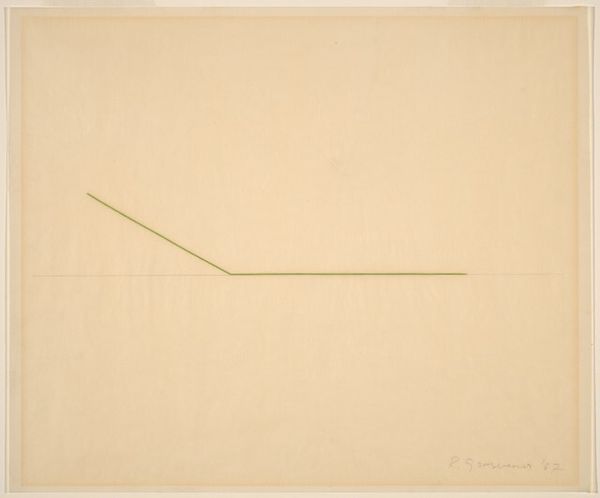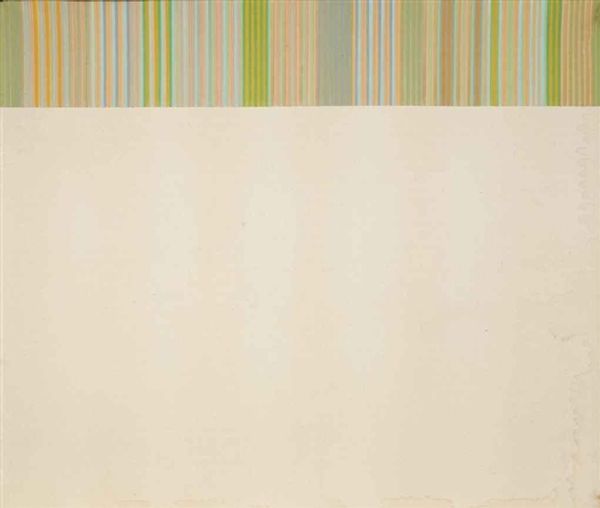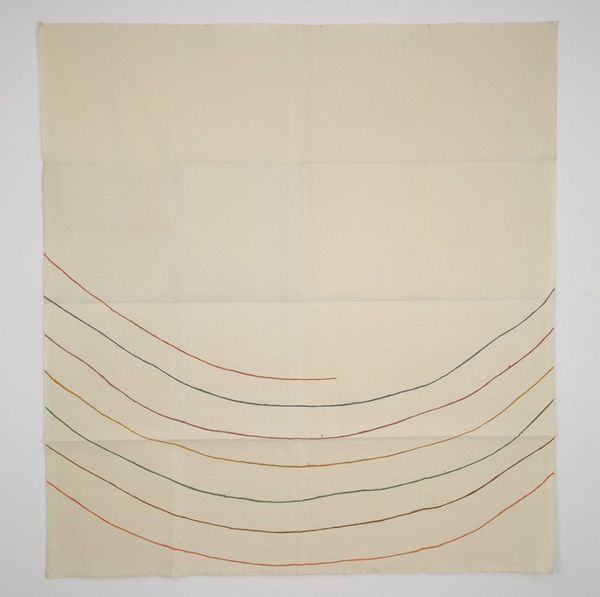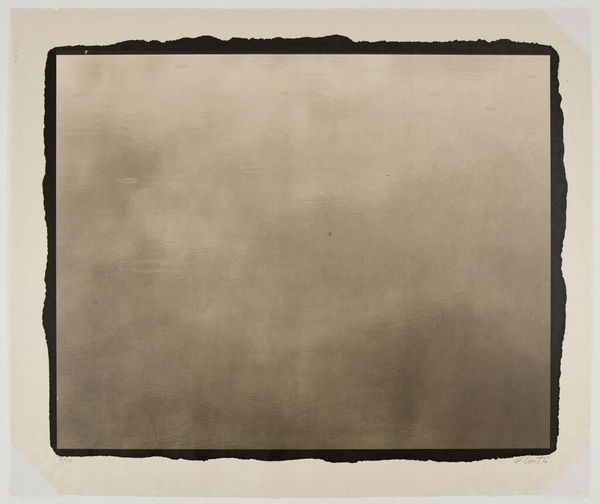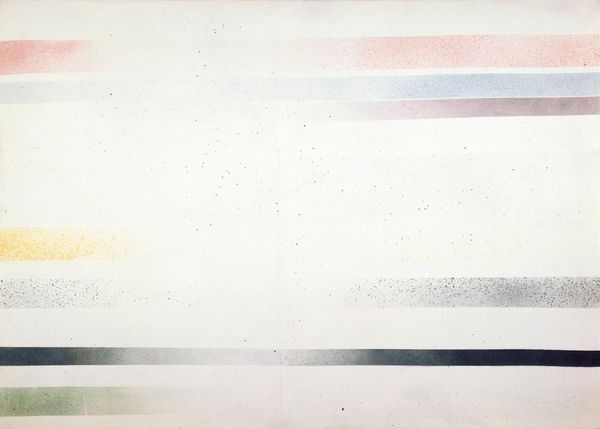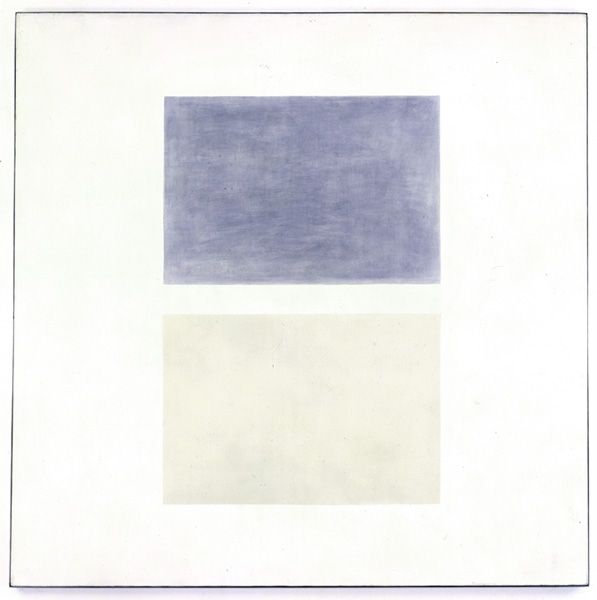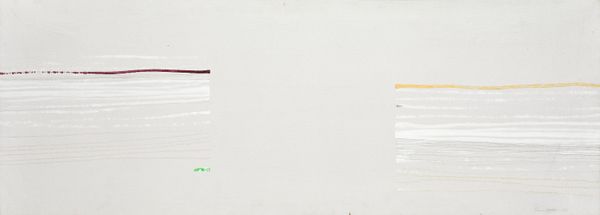
Copyright: Agnes Martin,Fair Use
Editor: Here we have Agnes Martin’s "Gratitude," from 2001, made with acrylic paint. It’s deceptively simple— mostly a pale wash with some horizontal lines. It strikes me as very quiet, almost meditative. What is your take on this work? Curator: The 'simplicity' you perceive is precisely where its power resides. Think about the socio-political landscape of 2001. In the aftermath of significant global events, Martin offers a stark contrast. Her work actively resists the clamor of mass media. Instead, it encourages a retreat, a moment for quiet contemplation. The lines themselves - how do they function within that context? Editor: I suppose the lines act as guides...almost like stanzas in a poem, but also boundaries? They don’t seem accidental but also not overly precise. Curator: Exactly. Their subtle imperfections remind us of the human hand, the fallibility inherent in creation, and the very conscious choices the artist made to create them, as well as allow us to ask - what purpose would a museum serve if not to allow quietude? Or do you think the purpose is always more about active engagements? Editor: That's an interesting thought – about the role of the museum as a quiet space. I guess I'm so used to thinking of museums as places of active learning and engagement that the idea of simply "being" with a work is refreshing. But maybe there’s tension, the painting appears simple, yet we give it significant attention by putting it in the context of art history. Curator: Absolutely, and the tension is productive. We grapple with it even now, as we speak about a painting that insists upon itself not making a grand statement. The market, institutions, scholarship, all wrap around an intention and a process to ultimately try to communicate nothing. Editor: So by even talking about it, are we almost…defeating its purpose? But then, without conversation, would anyone notice its subtleties, its resistance? Thank you, that gives me a new perspective on art like this and its place in the world. Curator: Precisely! And hopefully provides food for thought regarding the place of art amidst so much cultural noise, its purpose and accessibility in institutions.
Comments
No comments
Be the first to comment and join the conversation on the ultimate creative platform.

